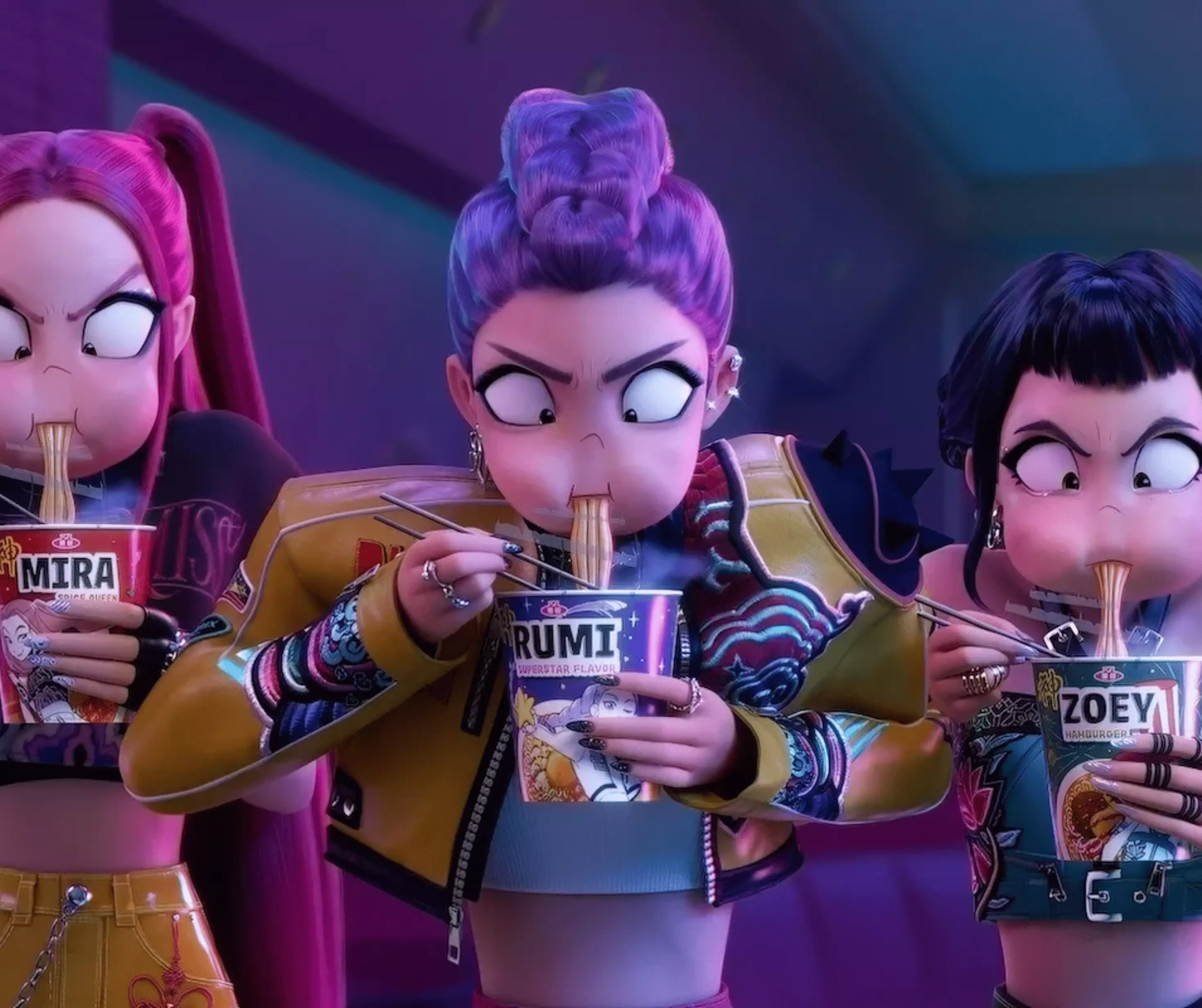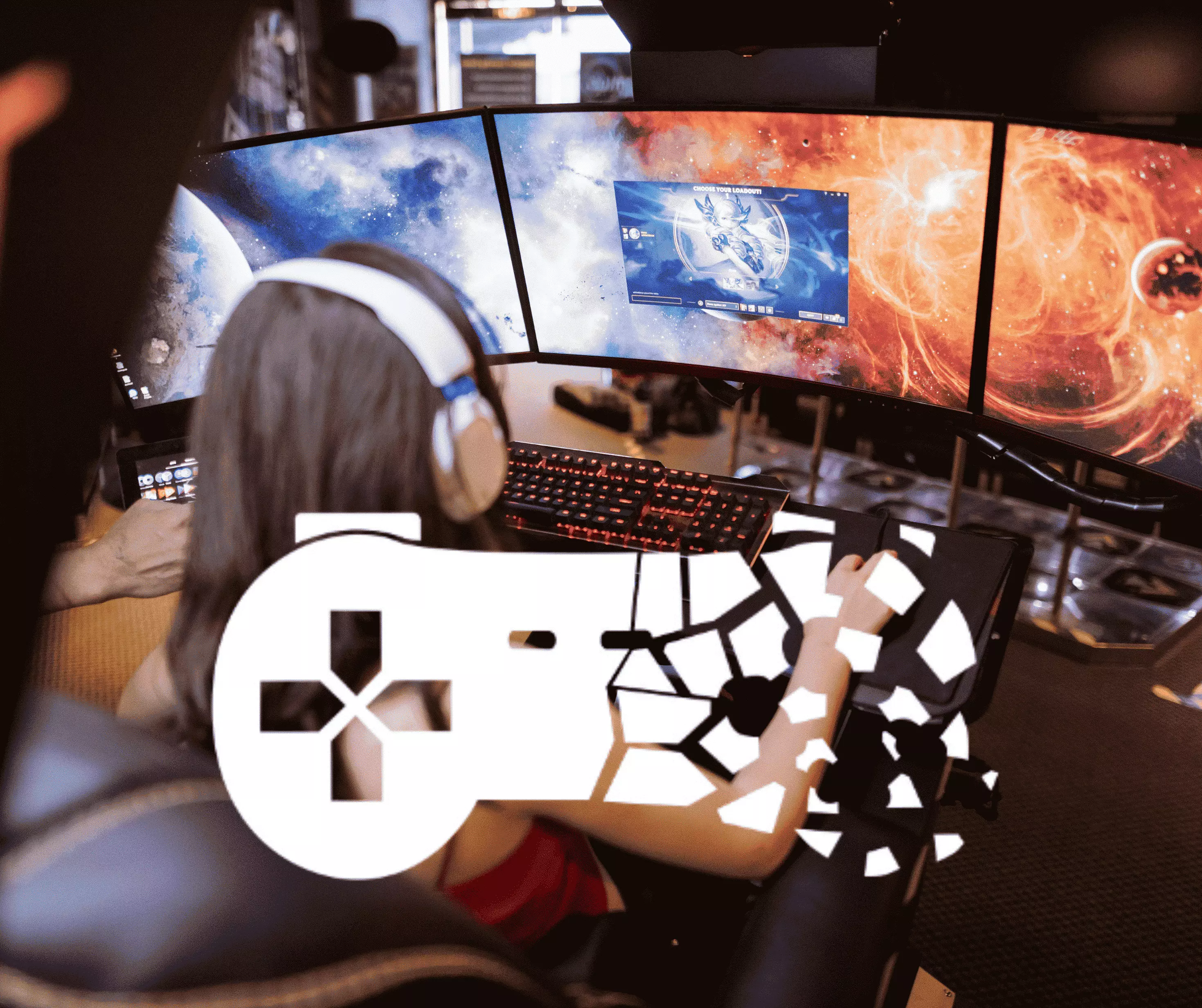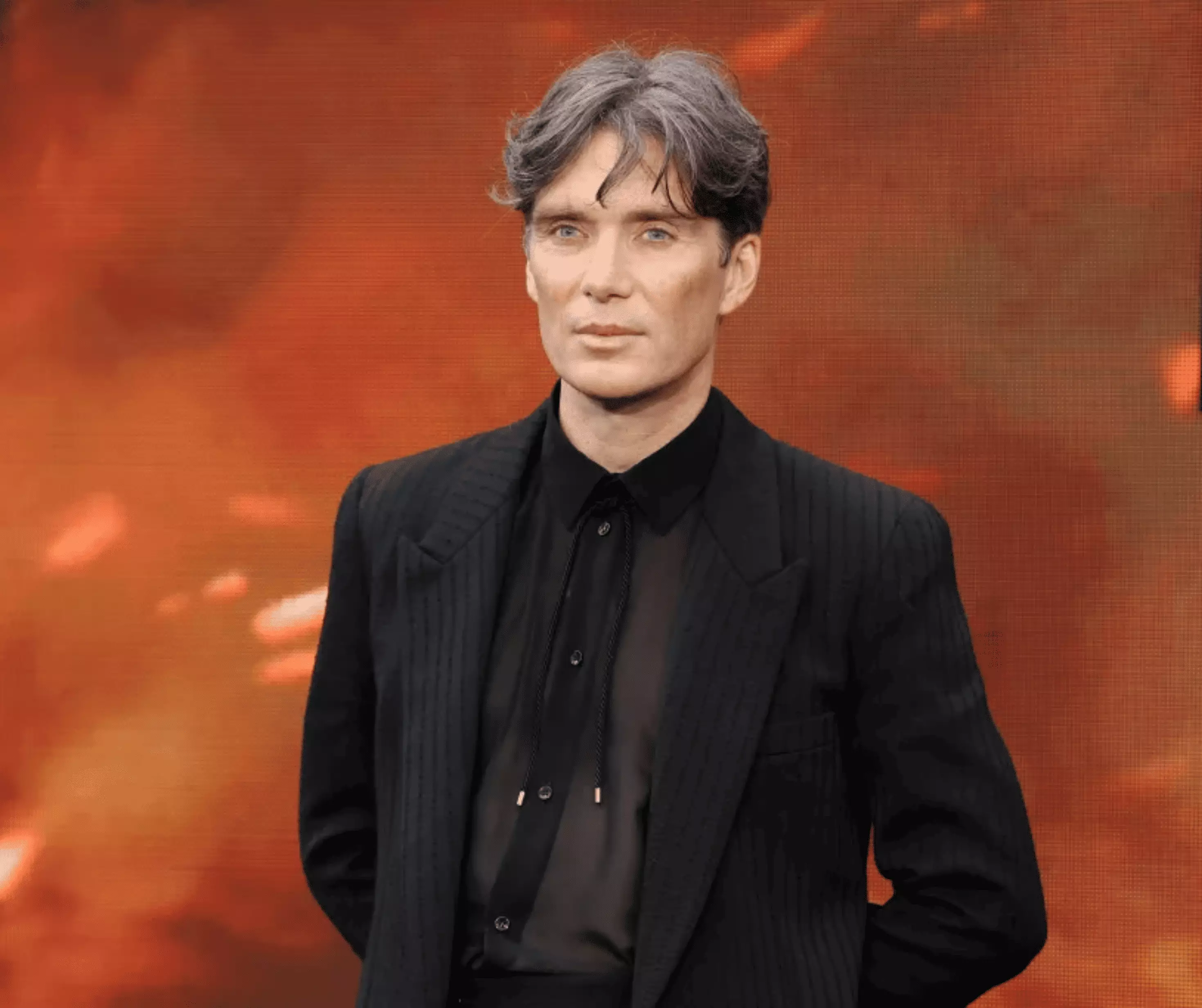Released globally on June 20, 2025, K‑Pop Demon Hunters has become a cultural juggernaut. Within 48 hours, it ranked #1 in 26 countries and entered Netflix’s Top 10 in 93. It now holds the highest Rotten Tomatoes score ever recorded for a Netflix original animated feature—96%. Its impact extends across film, music, fandom culture, and marketing strategy. This isn’t just a hit. It’s a fully activated entertainment ecosystem.
How Did a Fictional Girl Group Capture Global Attention?
At the centre of the film is HUNTR/X, a three-member K-pop group composed of Rumi, Mira, and Zoey. Though animated, they are voiced by real K‑Pop vocalists EJAE, Audrey Nina, and Rei Ami. The musical production team includes some of the most powerful names in the industry (Teddy Park, Lindgren, and Ian Eisendrath) who crafted tracks that live and thrive outside the film.Listeners loop the music even without watching the movie, as each song aligns with the story arcs, emotional beats, and performance visuals. For instance, “Golden” serves not only as the film’s climactic track but also as a character moment rich with story, emotion, and tension.
What Makes the Animation Style Stand Out in a Crowded Market?
Visually, the film refuses to be ordinary. Inspired by the cinematic style of Spider-Verse, it introduces a layered aesthetic that draws from concert lighting design, KPop stage blocking, Korean editorial photography, and traditional folklore symbolism. Facial animations were tailored to Korean diction and expression. Scenes were choreographed using reference videos and virtual camera rigs to mimic live concert cuts.The Honmoon, an energy barrier powered by music and protected by the girl group, adds a mystical dimension to the battle sequences. Each fight transforms into a live performance, and every live performance becomes a struggle for cultural survival, identity, and a voice. Rumi's personal journey, marked by the loss of her singing ability, imbues the narrative with genuine emotional depth.
How Did the Creators Blend Music, Myth, and Marketing?
Behind the sleek visuals and tight choreography is a meticulous, labour-intensive production process. The directors revealed they spent months aligning every beat of the music to character movement, describing it as “torturous” in its precision. This painstaking attention to timing allowed the songs to flow through the scenes as live performances, not background score.Soundtrack singles were released alongside teasers, music videos, and interview snippets. Each drop was part of a broader strategy that linked music marketing with streaming hype. Fan videos, choreography recreations, filter effects, and themed AR lightsticks quickly emerged across platforms. Netflix even launched a microsite dedicated to the fictional group, treating them as if they were real-world idols.
Why is Cultural Ownership a Talking Point?
While K‑Pop Demon Hunters is deeply grounded in Korean storytelling, it has stirred online debate. Some Chinese netizens accused the film of misusing Chinese cultural elements, including clothing patterns and mystical symbols. Korean scholars and filmmakers responded by pointing to documented folklore origins, traditional art, and the long-standing regional influences in Korean pop aesthetics.The discourse highlights the intricate nature of cultural representation in pan-Asian media. As streaming audiences grow increasingly global, every creative decision is scrutinised and interpreted through a multitude of cultural perspectives.
What’s Fueling Sequel Hype and Long-Term Fandom?
The final scenes hint at unresolved tensions, especially between Rumi and Jinu, the rival idol with ties to a darker demonic past. There’s space for origin stories, new characters, and even cross-group collaborations. Fan speculation around Jinu’s true fate has flooded discussion forums, with some threads reaching hundreds of comments within hours of the film’s release.Netflix confirmed that a sequel is in early development, following the film’s record-setting performance. Merchandise rollouts, live virtual showcases, and soundtrack expansion have already begun. As this universe grows, so will the potential for immersive fan engagement.
Why It’s a Marketing Gem
- Genre synergy: merges K‑Pop, action‑fantasy, animation and soundtrack marketing.
- Authenticity: real K‑Pop voices, respected producers, true Korean representation.
- Visually iconic: bold colour palettes tied to music and choreography.
- Multi‑layered narrative: emotional arcs, identity, fandom, romance.
- Built‑in sequel buzz: open ending with Rumi, Jinu, and origin story tease
Marketing Strategy: Winning Fans and Eyes
- Campaign focus: promote chart-style singles, behind‑the‑scenes music videos, and choreography breakdowns.
- Fandom play: interactive experiences like dance challenges, AR/VR light‑stick filters styled like Honmoon performances.
- Cultural engagement: spotlight Korean heritage in creative assets with proud storytelling.
- Staggered releases: singles premieres sync with trailer drops to build suspense and streaming momentum.
- Fan voting/events: virtual award show for best song, best dance move, and fan art to drive viral engagement.
What Should Marketers Take Away From All of This?
KPop Demon Hunters functions as both a story and a strategy. The film was designed to move across platforms. Its characters can live in short-form videos, music playlists, AR filters, and cosplay. It balances fantasy with cultural specificity, and emotional arcs with global fan service.This release proves that a fictional IP can launch with real-world traction when built with intent. Cross-department collaboration between animation, music, choreography, and marketing allowed every asset to perform double duty: as narrative and as campaign.
If you’re building a multi-platform brand or entertainment property, this is a blueprint. It’s a case study in timing, audience understanding, cultural sensitivity, and content remixability.
Want to create stories that launch like global debuts?
At Marketing Assistants, we help brands strategise and execute entertainment-first campaigns that spark fandom and drive engagement. Whether you’re launching a show, building a music brand, or integrating storytelling into your platform, we’ll help you get there.Get in touch with us and let us help you craft cross-platform content that engages, activates, and scales.



